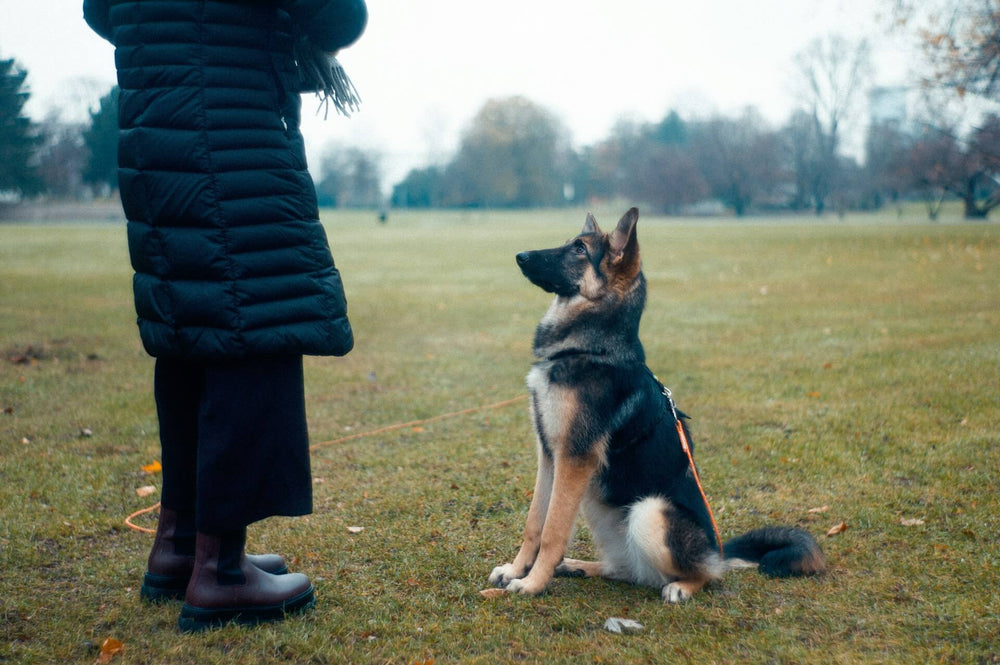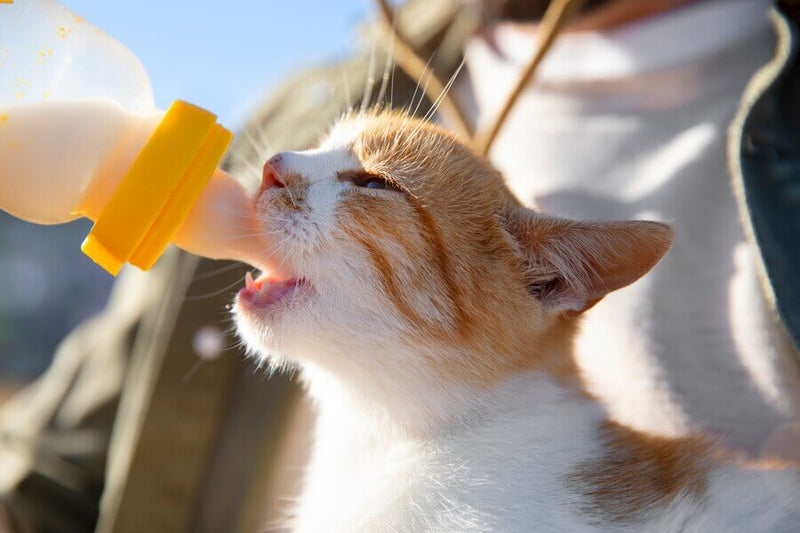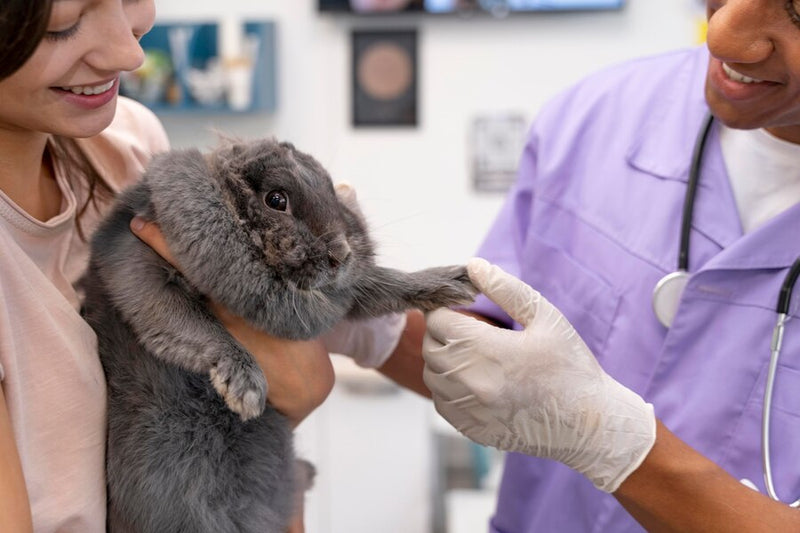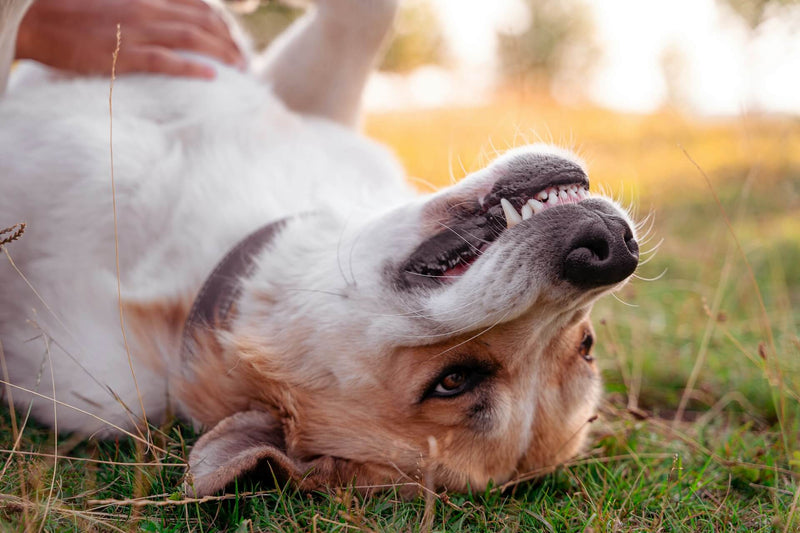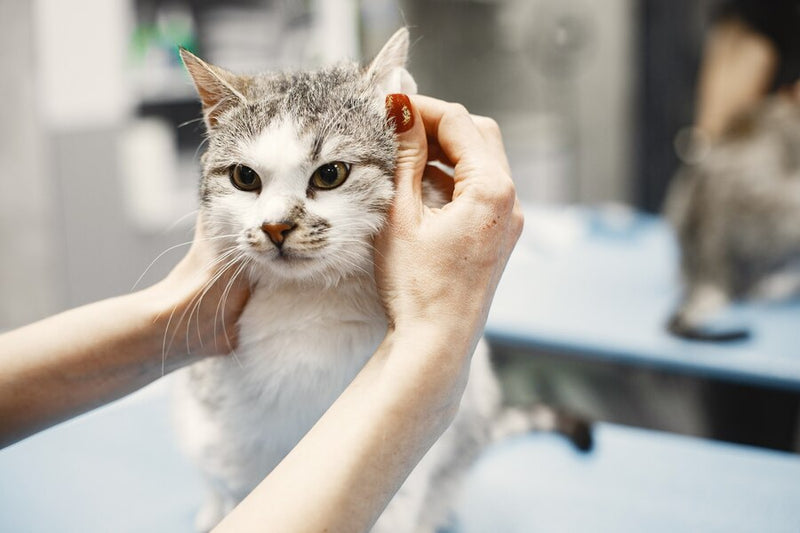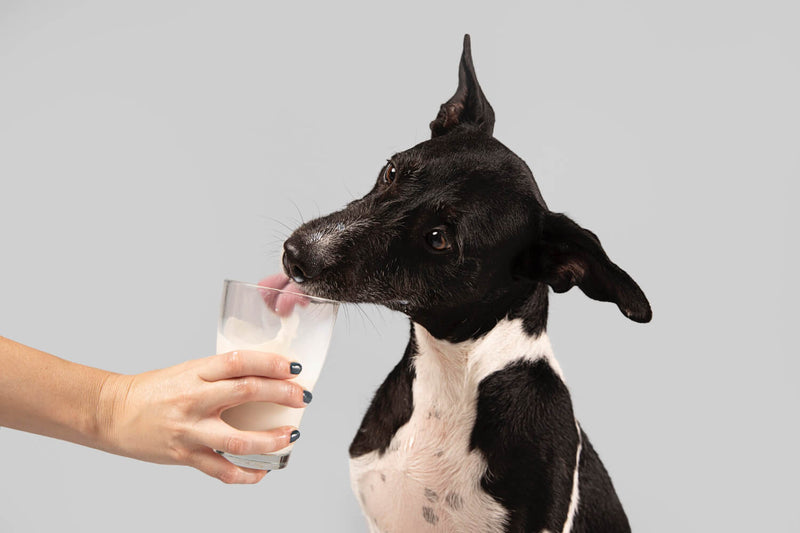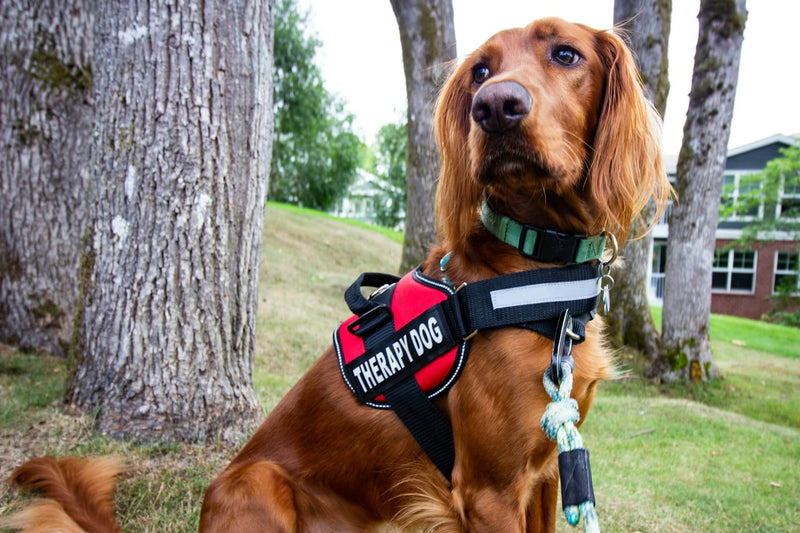
Welcome to Gritty Pet Co.
Your Canadian, specialty Pet Health & Wellness destination. 🇨🇦

Vet Reviewed & Approved
Dr. Ibrar A. is our veterinarian and a key member of our team. ✅
Brain training for dogs is essential to keeping your furry friend mentally sharp and happy. Ever wondered what goes on inside your dog's mind when they give you those adorable puppy eyes? Like us, dogs thrive on mental stimulation. Engaging their brains with interactive toys, puzzles, and new tricks not only keeps them entertained, but it prevents boredom and destructive behaviours. Imagine your dog joyfully solving a puzzle or mastering a new trick; they're probably not chewing your couch or surfing your counter at the same time, are they? Let's dig in...proverbially!
Key Takeaways
Brain training for dogs is essential for their mental health and happiness (1). Here are the most important points to keep in mind:
Enhancing Cognitive Abilities: Engaging in brain training for dogs through activities like puzzle feeders and trick (2) training stimulates their cognitive functions, keeps their minds sharp, and prevents boredom-induced behaviors.
Behavioral Improvement: Regular mental stimulation reduces destructive behaviours, such as excessive barking and chewing, by channeling your dog's energy into positive activities (3). This leads to a more content and well-behaved pet.
Bonding and Well-being: Brain training not only boosts your dog's mental health, but fosters trust and companionship between you and your dog (4) through shared activities and interactive play.
Bonus Takeaways
Advanced Cognitive Challenges: Incorporate breed-specific and high-difficulty puzzles to cater to your dog's unique instincts and skills, ensuring ongoing mental growth and preventing plateauing in their cognitive development. This tailored approach maximizes mental stimulation and keeps advanced learners engaged.
- Multi-Sensory Engagement: Utilize activities that engage multiple senses, such as scent work combined with obstacle courses, to provide comprehensive mental stimulation. This multi-faceted approach enhances cognitive abilities and keeps training sessions varied and exciting.

25 Brain Training Ideas for Dogs
Engaging your dog in brain training activities keeps them mentally sharp, reduces boredom, and strengthens your bond. Here are 25 creative and effective brain training ideas organized into five categories, which will help you keep your dog entertained and mentally stimulated. From interactive toys to DIY puzzles, these suggestions will help unlock your dog's full potential and enhance their cognitive abilities.
Interactive Toys
1. Puzzle Feeders: Encourage your dog to work for their food, enhancing problem-solving skills.
2. Treat-Dispensing Balls: Keep your dog entertained as they figure out how to release treats and track down the strays.
3. Smart Toys: Use toys with sensors and interactive features to provide endless mental challenges and a dash of unpredictability.
4. Kong Wobbler: A weighted toy that dispenses treats as it wobbles, keeping your dog engaged. Bonus: these are great for dogs with mobility issues but who still need to be engaged throughout the day!
5. Nina Ottosson Puzzles: Complex puzzles designed to challenge your dog's cognitive abilities.
DIY Projects
1. Homemade Snuffle Mat: Hide treats within fleece strips tied to a mat, stimulating foraging instincts.
2. PVC Pipe Puzzle: Build a treat-dispensing puzzle with PVC pipes, requiring manipulation to release treats.
3. Cardboard Box Maze: Create a maze with boxes and tunnels, hiding treats to encourage exploration.
4. DIY Scent Detection Box: Train your dog to identify scents with a box of compartments and scents.
5. Treat and Toy Dispenser Board: Attach containers to a board, requiring different actions to release treats.
Scent Work
1. Scent Detection Box: Train your dog to identify scents among various compartments, enhancing their olfactory skills.
2. Treat Hunt: Scatter treats around your yard and let your dog sniff them out, promoting natural foraging.
3. Scent Trails: Lay a scent trail with a treat at the end, encouraging your dog to follow their nose.
4. Scent Discrimination Games: Use different scents and train your dog to distinguish between them.
5. Hidden Scent Toys: Hide scented toys around the house for your dog to find, engaging their sense of smell.
Agility and Physical Challenges
1. DIY Agility Course: Use household items to create an obstacle course, promoting physical and mental exercise.
2. Homemade Weave Poles: Set up poles for your dog to weave through, improving coordination and focus.
3. Jumping Bars: Create jumping bars with PVC pipes or broomsticks, enhancing agility and strength.
4. Tire Jump: Create a tire jump using a hula hoop or old tire, encouraging jumping skills.
5. Tunnel Runs: Use collapsible tunnels to teach your dog to run through, promoting agility.
Training and Commands
1. Clicker Training: Use a clicker to mark and reward desired behaviors, speeding up learning.
2. Trick Variations: Modify known tricks to increase complexity and keep your dog learning.
3. Command Combinations: Combine multiple commands to challenge your dog’s memory and obedience.
4. Name Recognition: Teach your dog the names of different toys and ask them to fetch specific ones.
5. Impulse Control: Train your dog to wait patiently before receiving treats or toys, improving self-control. Bonus: This is particularly valuable as a foundational command and can be practiced any time, any place!
Remember to tailor the activities to suit your dog's individual preferences, energy level, and abilities. Adjust the difficulty of the games to match your dog's skill level. Start with simple tasks and gradually increase complexity as your dog becomes more proficient. Also, rotate games regularly. Keep your dog's interest piqued by rotating through different brain games regularly. This prevents boredom and ensures ongoing mental stimulation.
Behavior Improvement Through Mental Stimulation
Mental stimulation plays a crucial role in shaping your pet's behavior. Boredom and lack of mental stimulation can lead to destructive behaviors like excessive barking, chewing, or digging (5). By providing ample mental enrichment, you can redirect their energy towards positive activities and prevent behavioral issues.
When your pet is mentally stimulated, they're less likely to exhibit unwanted behaviors out of boredom or frustration. Engaging their minds with interactive toys, brain exercises, and trick training channels their energy into productive outlets, leading to a calmer and happier pet.
Psychological Benefits: Nurturing Mental Health in Dogs
Just as mental stimulation is crucial for our own mental health, it plays a vital role in the well-being of our canine companions. Let's explore these benefits:
Stress Reduction: Dogs engaged in activities like puzzle-solving and interactive play are mentally stimulated and distracted from negative behaviours. These activities release feel-good hormones like dopamine and serotonin, reducing stress levels and promoting a sense of calm and relaxation.
Alleviates Boredom: Brain training prevents destructive behaviours by keeping dogs mentally stimulated and engaged. Without adequate mental stimulation, dogs may resort to behaviors like excessive chewing or digging out of boredom. Brain training activities provide dogs with opportunities for exploration, problem-solving, and creativity, keeping their minds sharp and content.
Cognitive Stimulation: Brain training promotes cognitive function through activities such as learning new tricks or solving puzzles. These activities stimulate neuronal connections in the brain, challenging dogs' problem-solving skills, memory, and spatial awareness. By keeping their minds active, brain training helps maintain cognitive function well into their golden years.
Sense of Achievement: Brain training activities provide dogs with a sense of accomplishment as they master new skills and complete tasks. Whether it's learning a complex trick or successfully completing an agility course, dogs earn praise and rewards from their human companions, boosting their confidence and self-esteem.
Bonding and Connection: Engaging in brain training activities strengthens the bond between dogs and their owners. Through interactive play and training sessions, owners learn to communicate effectively with their dogs, building trust and strengthening their emotional connection. This shared experience fosters a sense of companionship and mutual respect, enriching both the owner's and the dog's lives.
Enhanced Well-being: By prioritizing their mental health, brain training contributes to dogs' overall happiness and fulfillment. Dogs that engage in brain training activities lead more enriched lives, brimming with joy, vitality, and companionship.
Interactive Play: Strengthening the Human-Canine Bond
Beyond the cognitive benefits, interactive play is a powerful way to strengthen the bond between you and your dog (6). Whether it's a game of fetch, a session of hide-and-seek, or a challenging puzzle-solving adventure, interactive play deepens your connection and reinforces trust and communication. We'll explore fun and engaging activities that promote bonding and leave both you and your furry friend smiling from ear to ear.

Breed-Specific Brain Training Strategies
Understanding your dog's breed characteristics is key to tailoring activities that align with their natural instincts. By identifying these traits, you can create engaging brain training exercises that cater to your dog's unique needs. Here are some breed-specific strategies to consider:
Identify Breed Instincts: Research your dog's breed to understand their natural behaviors and instincts. For example, herding dogs may enjoy activities that involve chasing and corralling, while retrievers may thrive on fetching games.
Tailor Activities Accordingly: Once you understand your dog's breed instincts, tailor activities to match. For instance, if you have a terrier breed known for digging, create a digging pit or hide treats in the yard for them to find.
Provide Suitable Challenges: Offer your dog puzzles and games that tap into their breed-specific skills. This could include scent work for hounds, agility courses for sporting breeds, or problem-solving tasks for working breeds.
Tech Integration
Incorporating technology into your dog's training regimen can enhance their cognitive development and provide endless opportunities for engagement. Smart toys, equipped with interactive features like motion sensors and treat dispensers, offer stimulating experiences that keep your dog entertained and mentally sharp (7).
Additionally, there are various smartphone apps designed specifically for dog training, offering guidance on obedience, agility, and even behavior modification. From virtual training sessions to interactive games, tech integration provides innovative ways to strengthen the bond between you and your furry companion while promoting mental stimulation and learning.
FAQ
1. What Is Brain Training For Dogs And Why Is It Important?
Brain training for dogs involves activities that stimulate their mental faculties, such as puzzles and problem-solving games. It’s essential because it keeps dogs mentally sharp, reduces boredom, and prevents destructive behaviors by channeling their energy into productive activities.
2. How Often Should I Engage My Dog In Brain Training Activities?
Ideally, daily brain training sessions are best, but even a few times a week can be beneficial. Consistent mental stimulation helps keep your dog’s mind active and can significantly improve their behavior and overall well-being.
3. What Are Some Easy Brain Training Exercises I Can Do At Home?
You can try interactive toys, DIY puzzles, hide and seek with treats, or teaching new tricks. For example, using a puzzle feeder or creating a simple obstacle course with household items can be both fun and mentally stimulating for your dog.
4. How Can Brain Training Help Improve My Dog’s Behavior?
Mental stimulation can reduce destructive behaviors caused by boredom or frustration, such as excessive barking or chewing. Engaging your dog’s mind with brain exercises helps redirect their energy into positive activities, leading to a calmer and happier pet.
5. Are There Specific Toys Recommended For Brain Training?
Yes, toys like puzzle feeders, treat-dispensing balls, and interactive toys are excellent for brain training. Brands such as Kong and Nina Ottosson offer a variety of toys designed to challenge your dog’s problem-solving skills and keep them engaged for hours.
Top 3 YouTube Videos on Brain Training for Dogs
1. 4 EASY Brain Games! Exercises your dog AT HOME
Why Watch : Discover four simple yet effective brain games you can set up at home to keep your dog mentally stimulated. Perfect for all breeds and energy levels, these exercises are easy to implement and fun for your furry friend.
2. How to Mentally Stimulate a Dog
Why Watch : Learn practical tips and tricks to mentally stimulate your dog and prevent boredom. This video covers various activities and toys that can help engage your dog’s mind and improve their overall well-being.
3. DIY Dog Puzzles - Keep Your Dog Busy and Happy
Why Watch : This video guides you through creating DIY dog puzzles using household items. These puzzles are great for keeping your dog busy, challenging their problem-solving skills, and providing mental enrichment.
Final Thoughts
Incorporating mental stimulation activities into your dog's daily routine offers a multitude of benefits that go beyond mere entertainment. From interactive toys and puzzles to obstacle courses and trick training, there are many fun activities you can do together. Not only do these activities provide entertainment, but they also improve behaviour and strengthen your bond.
References
- 1. Grigg, E., & Donaldson, T. (2017). The Science Behind a Happy Dog: Canine Training, Thinking and Behaviour. 5m Books Ltd.
- 2. Leest, K. (2024). Kristin’s Meet Me with Pawsitivity: A Comprehensive Guide to Effective Dog Training Through Positive Reinforcement. Pawsitivity llc.
- 3. Beaver, B. V. (2009). Canine behavior: insights and answers. Elsevier Health Sciences.
- 4. Julius, H., Beetz, A., Kotrschal, K., Turner, D., & Uvnäs-Moberg, K. (2012). Attachment to pets: An integrative view of human-animal relationships with implications for therapeutic practice. Hogrefe Publishing GmbH.
- 5. Sung, W., & Radosta, L. (2023). Unruly and destructive behaviors–canine. Behavior Problems of the Dog and Cat: Behavior Problems of the Dog and Cat-E-Book, 362(360), 345.
- 6. Walsh, F. (2009). Human‐animal bonds I: The relational significance of companion animals. Family process, 48(4), 462-480.
- 7. Pons, P., Jaen, J., & Catala, A. (2015). Envisioning future playful interactive environments for animals. More playful user interfaces: Interfaces that invite social and physical interaction, 121-150.

